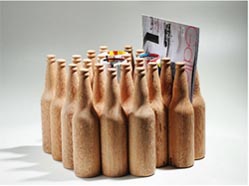Artist Liam Gillick’s “A Variability Quantifier (The Fogo Island Red Weather Station)” For Fogo Island Arts
A wondrous architectural art installation and functional part of the World Weather Network

For world travelers, architectural tourists or anyone who daydreams of remote locales, Newfoundland’s Fogo Island is perhaps best known as the home of the utterly astonishing and unexpected Fogo Island Inn. Designed by Todd Saunders and imagined by Canadian entrepreneur and esteemed innkeeper Zita Cobb, the inn may be one of the most magnetizing examples of modern design informed by local architectural language. Saunders looked to the traditional saltbox homes of fishermen on Fogo Island for inspiration; infusing humble materials and simple shapes with a new sense of purpose. Its position amidst rocky terrain steps from the Atlantic Ocean only contributes to the overwhelming sense of wonder. Though the inn may be the primary draw to Fogo Island, it’s just one piece in an ecosystem—developed by Cobb and known as Shorefast—that’s determined to support the island’s economy and its people.
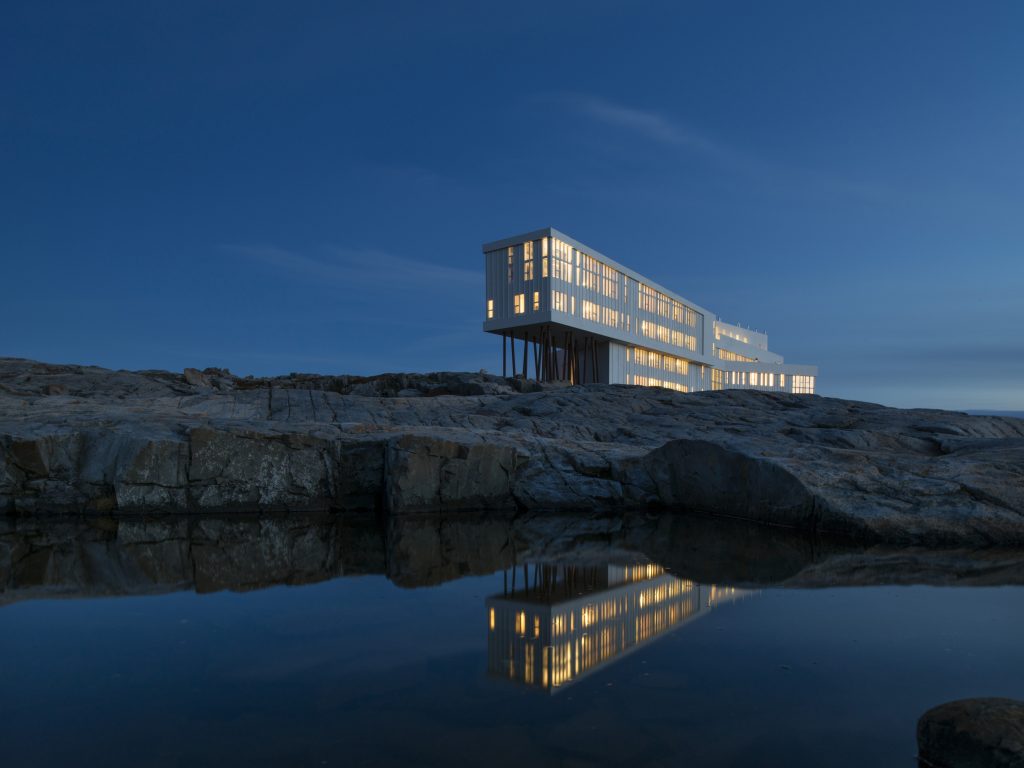
Fogo Island Arts, a charitable program under the Shorefast umbrella, strives to imbue Fogo Island with contemporary art and the pressing ideas within. Last October, prior to our visit to the Fogo Island Inn, the arts organization partnered with the National Gallery of Canada and the result is a work that not only mirrors the values of the Fogo Island Inn’s architecture but directly contributes to the battle against climate change. This pavilion-like sculpture, an operational weather station known as “A Variability Quantifier,” was created by the New York-based artist Liam Gillick. Part of the World Weather Network (WWN), the work is located off of Fogo Island’s Waterman’s Brook Walking Trail—and discovering it while on foot among the flora, with unbroken views of the ocean—is serendipitous and fulfilling.
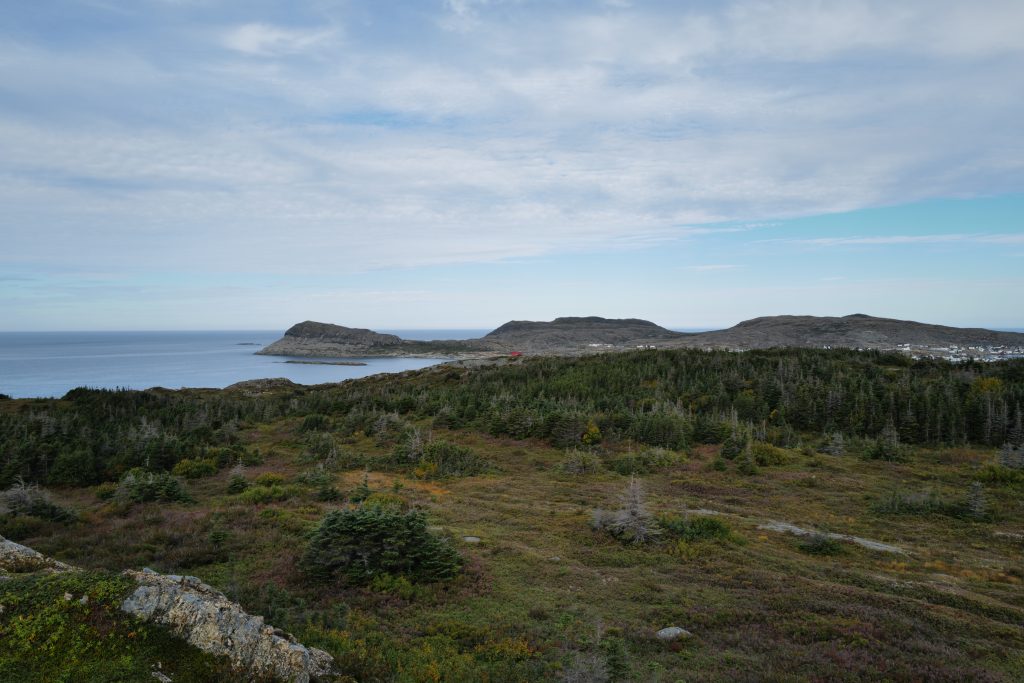
“Museums have traditionally brought things to the center rather than distributing art to the edge,” Gillick tells COOL HUNTING. “This has been an issue for a lot of artists and curators for a long time. It has been discussed a lot and argued over. The problem is that most of the facilities and knowledge required to protect and talk about art remains at the heart of the institution. So this is a partnership, where the artwork is produced and managed by Fogo Island Arts but is actually part of the collection of the National Gallery.”
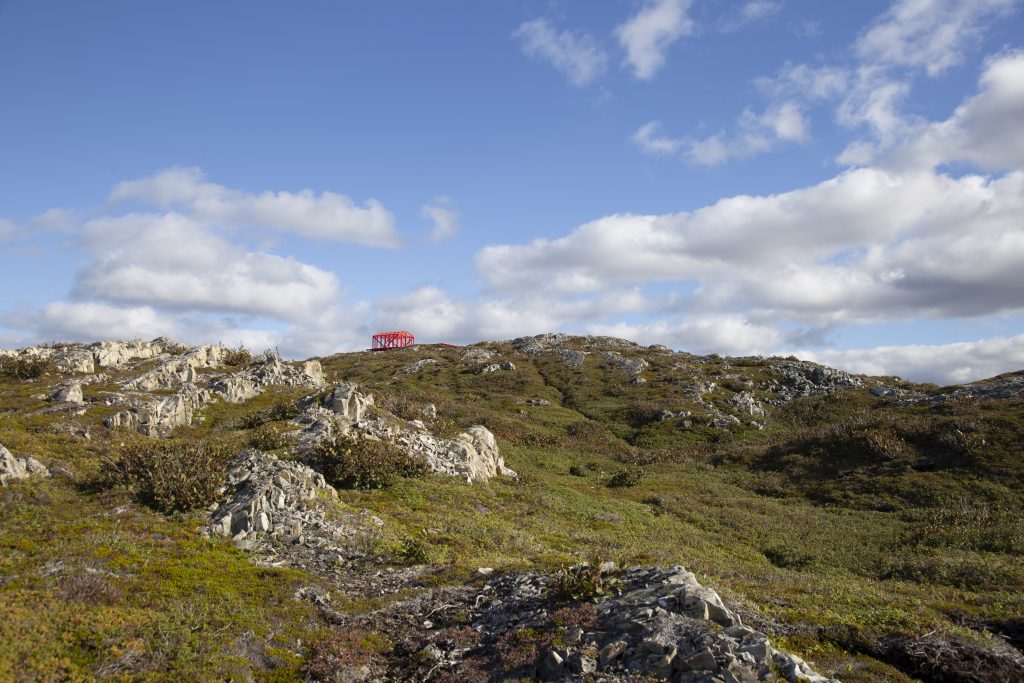
Both organizations, Gillick believes, continue to support the artwork (which will be on display until October 2026) with their own knowledge and capabilities. “It also has produced a lot of new conversations about future projects beyond this one and, importantly, brought curators from Ottawa out to Fogo Island,” Gillick continues. “It’s easy to talk about ideas like ‘outreach’ but this only works if there are local people around who are treated as equal partners, not just recipients of centralized largesse.”
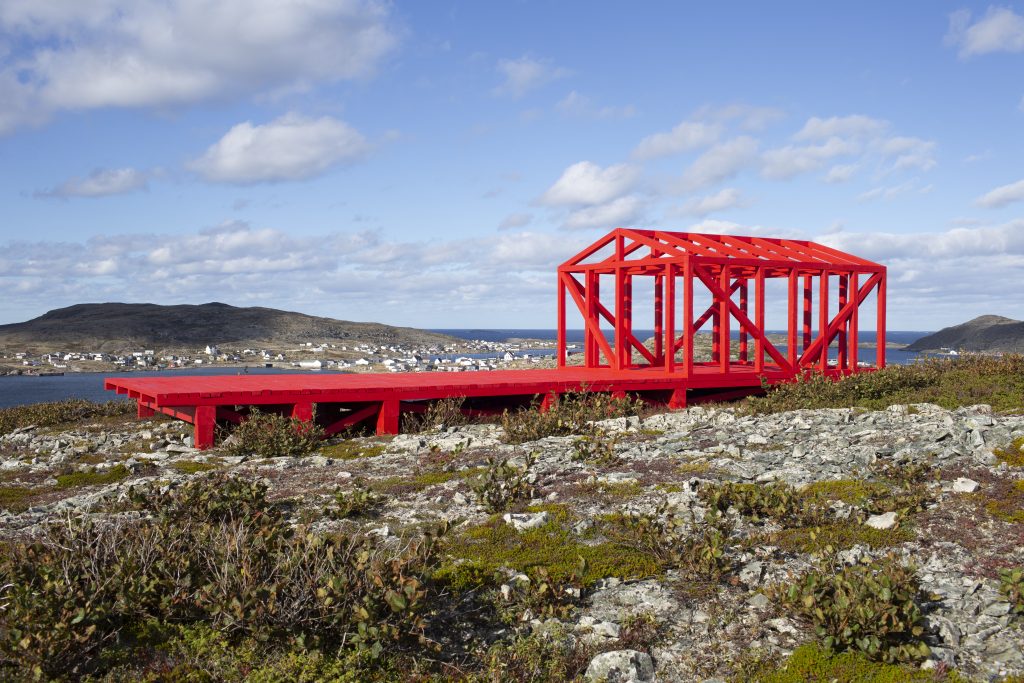
To develop “A Variability Quantifier,” Gillick looked to the fishing stages used on the island. “Essentially a shed standing on a platform, they have been efficient machines for low-impact fish processing for a long time,” he explains. “Each one is unique and has special features adapted by extended families and working partners.” As with the inn, this is an “acknowledgment of the power of vernacular architecture,” he adds. Gillick visited a historic fishing stage that had been preserved and recently renovated. He observed that, as with other wooden buildings in North America, “it’s all about the framing.”
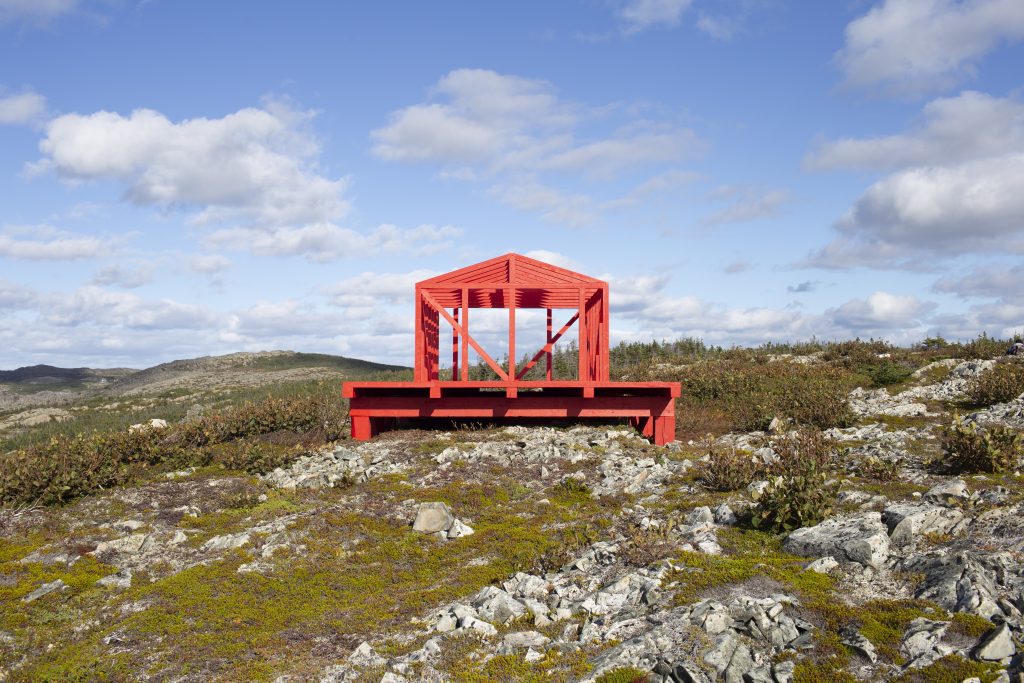
“Fogo Island Arts put together research material and drawings for me and after going through it all, I set that aside and first worked on the idea of a very small scale model of the framing of a fishing stage,” he explains. “Knowing how a building works tells a lot about the problems of our time. Architecture that signals climate consciousness through surface additions, like certain cladding or green roofs, but is essentially just a standard bit of highly processed work doesn’t interest me. Revealing structure can still express something about the real changes that can or cannot be achieved in the built world.”

Gillick then scaled up the small model, with the final station roughly three-quarters the size of a real Fogo Island fishing stage. They then began a quest to find the ideal location—shifting from the ferry station to the forest. “The curators worked hard to find alternative locations that would draw people into the landscape,” Gillick says. “The ferry idea was a bit of an outsider’s idea; something striking for a person who doesn’t know the island. For the people at Fogo Island Arts, the real experience of the land could only be achieved by getting off the road system and walking.” As a New Yorker who walks a lot, Gillick embraced the idea.
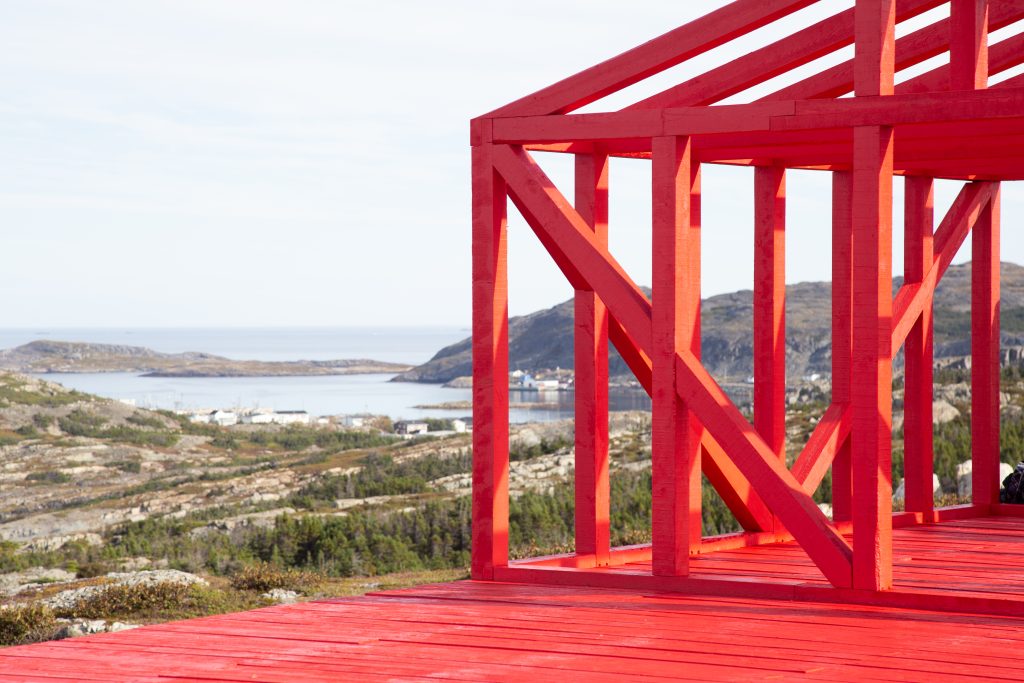
To catch a glimpse of the rich red installation in the distance—against the green of the vegetation, the white of snowfall, or the innumerable variations of blue forming the sky and the sea, one feels a sense of discovery. “You encounter the idealized framing of a fishing stage that is actually an elaborate rig for a weather station. First seeing it at on top of a headland as something that is potential rather than final. Something that reveals information about its own construction and is not permanent in appearance,” Gillick says. As with all good art, it inspires as many questions as it does answers.

Equal parts earthy and vibrant, the artwork’s hue nods to its use as a signal color and also references the work of Donald Judd, who said that “light cadmium red defined form well, because of the way the shadows work upon the structure.” Gillick explains, “A darker red is a color that is still used in the environment as a preserver. Iron oxide protects wood. Red oxide paint is all over North America on farm buildings and equipment and steel framing. So I think Judd also liked the association with this idea of a functional unpretentious object in a landscape.”
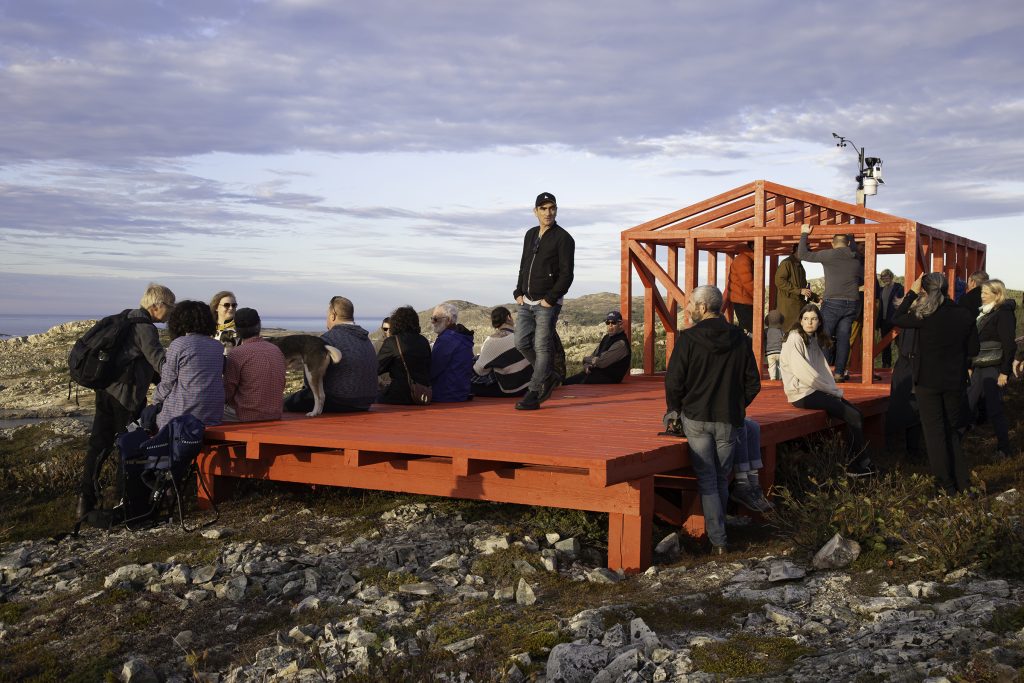
“Through all of this I have grown interested in the people who produce data and create the underpinnings of our technological present,” Gillick says. “I want to know what the code is. Not just in relation to computers, but in the built world around us—the emotive and psychological code. The code reveals a lot about the grey areas of society and often shows the true intentions or veiled desires of the packaging. This is true of buildings, software and politics. People think artists might be able to address big questions in new ways. I am not sure that’s correct. I think they often can reveal small questions, faults, ruptures or hidden structures.”
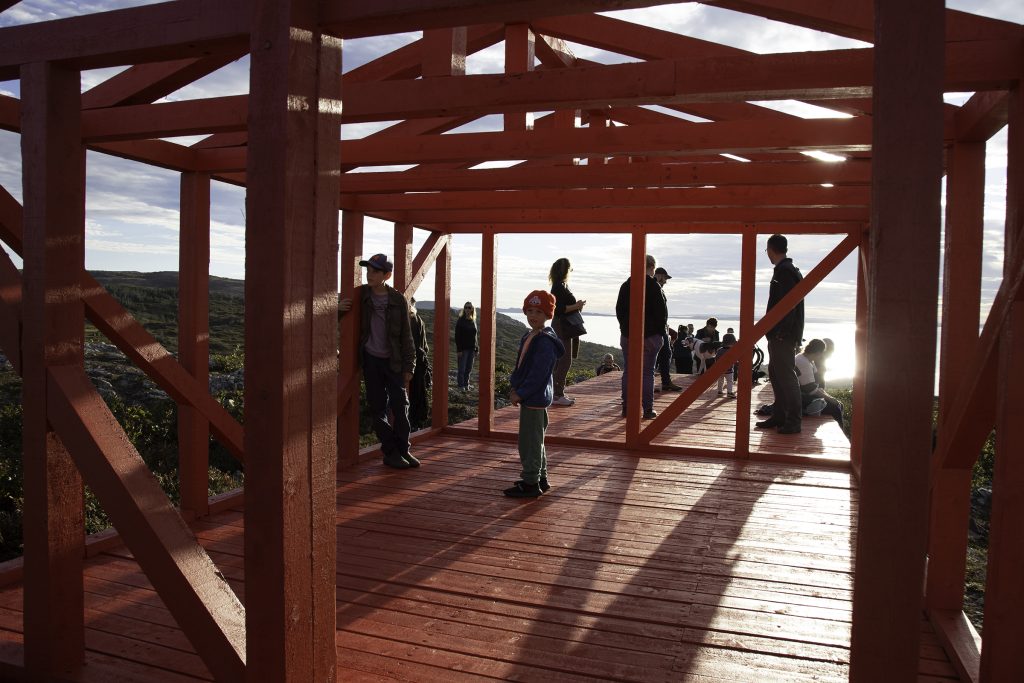
Fogo Island rises alongside the Labrador Current. This coastal position offers a frontline view of the climate crisis as well as proximity to potential data sources. “I got interested in the science of climate change as I was increasingly invited to respond to the climate emergency,” Gillick says. “I wanted to go back to the empirical math at the heart of our current understanding of conditions and trends… I think metaphorical works about the climate emergency are fine, but artists can reveal a lot by bringing forward work that is maybe a little more complicated.”

One of the greatest in-person pleasures of Gillick’s work is the ability to touch it, to climb upon it and become a part of it—to gaze out at the surroundings as it silently collects weather data to be analyzed by scientists elsewhere. “It is intended as a thing to walk to without any obligations for use,” he says. “In this way it’s a bit like walking to a lighthouse. It’s for you and for others at the same time. It is functional but the function is displaced. There are no instructions but the form itself suggests that you can sit on it or walk around on it. I like producing these middle ground objects that are not over determined but have an inherent potential.”

Gillick, an artist deeply committed to understanding the built world and how humans engage with it, also had his own unique exchange with the Fogo Island Inn. “My first visit to Fogo I stayed in a little cottage with the curator Nicolaus Schafhausen,” he says. “We had a great time, drinking and talking and generally shifting our own mental time zones away from the traditional centers. This was the context of my first visit to the inn: Sitting in a little cottage one minute then suddenly moving a couple of centuries into the future by driving to the inn. I still like this feeling the best. It is not about the architecture per se, but the process of arriving and leaving. This is the magic of the inn for me. The transitions. The feeling of moving rapidly through time. I don’t look at it as a structure—or critique it as a building—for me it is a time machine with a magic portal.”
Hero image courtesy of Liam Gillick
